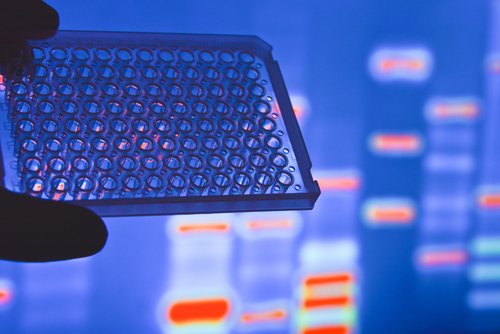First Protein Biomarkers Identified in CMT2 Patients May Help Detect New Therapies, Researchers Say

For the first time, protein biomarkers of Charcot-Marie-Tooth disease type 2 (CMT2) have been identified, which may help in the development of new treatment strategies, according to researchers.
The study, “PFN2 and GAMT as common molecular determinants of axonal Charcot-Marie-Tooth disease,” appeared in the Journal of Neurology, Neurosurgery & Psychiatry.
CMT2 is caused by damage to the axon (a long projection of a nerve cell), which impairs the transmission of nerve impulses to muscles. Although symptoms are similar to those of CMT1, CMT2 presents more variability in age of onset and degree of disability.
Genetic studies have been unraveling a growing list of mutations associated with axonal CMT, which currently includes more than 140 mutations in 26 genes. This substantial genetic variability complicates disease diagnosis and prognosis. Potential CMT1 biomarkers have been reported, but no such discoveries have yet been made for CMT2.
Researchers set out to determine common features in different CMT2 subtypes, so that both biomarkers and potential new therapeutic targets could be identified. A total of 43 patients and 22 healthy controls from neuromuscular centers in Belgium, Italy, and the U.K. were included.
A large-scale protein analysis was conducted on lymphoblasts (a type of immature white blood cell that generates lymphocytes) from CMT2 patients with different gene mutations and from controls, as well as on motor neurons derived from patients’ stem cells and sciatic nerves of CMT2 mice.
Researchers found that two proteins, profilin 2 (PFN2) and guanidinoacetate methyltransferase (GAMT), were present at lower levels in different CMT2 patients compared to controls. Similar findings were observed at the RNA level (ribonucleic acid, or RNA, is transcribed from DNA and translated into proteins).
PFN2 is a profilin isoform (variant) found in the brain that interacts with other proteins to influence the generation of neurons and synapses. PFN2 has been proposed as a potential disease biomarker and therapeutic target for esophageal squamous cell carcinoma, researchers said.
GAMT is a key part of energy production and storage in tissue with high energy demand, such as the brain. A deficiency in GAMT has been described in epilepsy.
The analysis also showed a progressive decrease of PFN2 with age, in contrast to an increase in healthy controls. Unlike GAMT, this reduction in PFN2 was also found in the motor neurons of patient stem cells and mouse sciatic nerves.
Further analysis to evaluate the biomarker validity of PFN2 showed greater sensitivity and specificity than the Alzheimer’s biomarkers Abeta42 and tau in classifying patients based on age and phenotype (both motor and sensory symptoms).
More studies are needed to better determine the correlation of PFN2 and GAMT with disease severity, the authors said.
“We unveil PFN2 and GAMT as molecular determinants of CMT2 with possible indications of the role of PFN2 in the pathogenesis and disease progression,” the investigators said.
“This is the first study describing biomarkers that can boost the development of therapeutic strategies targeting a wider spectrum of CMT2 patients,” they added.





